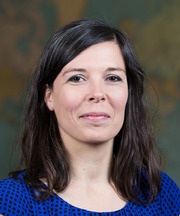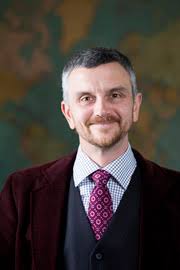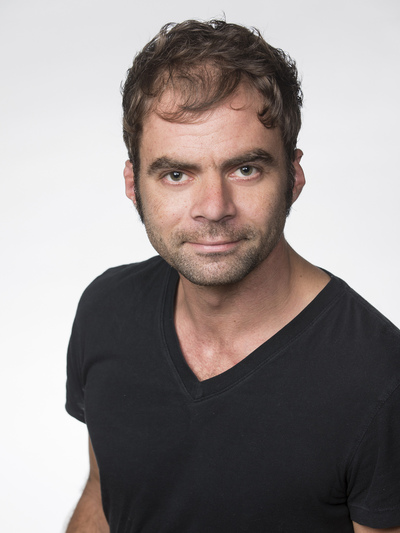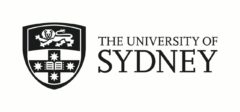“The past is a foreign country; they do things differently there.”
So goes L.P. Hartley’s famous opening line from his novel, The Go-Between, a line that wistfully reflects on those characteristics of history which often cause it to elude us. History is distant and intangible, governed by different moralities; sometimes, it is a land lost entirely to us. In attempting to write history, historians will inevitably find themselves occupying the shoes of someone long gone, walking their path and breathing in their air, asking aloud, “What would they have done?”, “What would they have wanted to do?”, and of course, that everlasting, eternal question: “What happened?” Hartley’s quip about history is one that I have loved for many years, and perhaps it is no surprise that the project I have completed over the course of this semester derives a great deal of inspiration from it. But, in a way that I never would have expected, my project handles his conception of the past, as a ‘foreign country’, in an incredibly literal way.
Over the last three months, I have been volunteering for the Heritage Centre, Museum and Archives at the Royal Prince Alfred Hospital. The project that I have created as a result of my volunteering is a children’s programme for the RPA Museum, consisting of both an activity booklet, and a guided tour. The activity booklet, complete with illustrations and questions that the children will have to answer, interacts with a series of ‘checkpoints’ throughout the museum, marking objects or information of significance. It is at these checkpoints where the children will be able to find answers to the questions in their booklet, or fill in any missing information that the booklet requires them to.
From the very beginning of my volunteering with the Heritage Centre, it was made clear to me that the hospital’s museum was struggling to attract visitors. Over the course of my stay, there could not have been more than about a dozen or so people who wandered in or asked about the items on display. The majority of my time at RPA was thus focused on archival research and organisation, writing and re-writing plaques for objects throughout the museum, and even designing a cabinet of my own. All the work I carried out, though incredibly varied, had a singular focus: to ensure that the rich, and interesting history of the hospital was actually being communicated to the public. My work was just one part of a significant shift taking place within the hospital walls, a move to celebrate the past in a visible, and most importantly accessible way.
Visibility and accessibility were, therefore, at the forefront of my mind when I was creating my project. RPA Museum had hosted children’s tours before, but the last time that they had conducted a guided tour for schoolkids was, as manager Scott informed me, three years ago. When I asked if I could have a look at the activity booklet they had provided, hoping I could have an example to look to, Scott handed me a stack of white A4 sheets stapled together at the corners, filled haphazardly with graphs and paragraphs of medical terminology in miniscule 11-point Calibri font. It was a little amusing to see a children’s history so opposite to the histories that I most commonly see scattered around museums and libraries. Often, I find that the children’s ‘versions’ of history are written somewhat condescendingly and in an overly simplistic way; but here, I was being faced with a written history that would make an academic weep.
What was obvious for me, from that point onwards, was that I had to maintain a crucial balance between making my history accessible, and ensuring that I didn’t speak down to my audience, who were most likely going to be upper-level primary school students. Using sources from the archives, such as the hospital’s annual reports and gazettes, I selected what I believed to be interesting or important, based on the selection of evidence in secondary novels written about the hospital’s history. I made sure that my histories were written in a congenial tone, and that the writing was not too verbose or complicated. Yet I also made an effort to allow room for the children themselves to learn or research the terms they didn’t understand, which resulted in the inclusion of an interactive glossary on the last page of the booklet.
I also tried to include as diverse a history as I could – not only of various buildings, and medical instruments, but focusing also on those histories which are often marginalised. In beginning the activity booklet with an Acknowledgement of Country, I drew on Nathan Sentance’s ideas on the importance of decolonising history. He posed us all a question that we should always consider when telling history: “What responsibility do we have, as non-indigenous historians, towards the communication of indigenous history?” In writing an explanation of the importance of an Acknowledgement of Country, as well as including a biography of Alison Bush, the first Indigenous midwife to be based at a major hospital in NSW, I hoped that I would be contributing to a socially inclusive history, and informing my young audience of the meaning of this reconciliation.
Of course, it is difficult to make history (and words in general) fun for children who detest nothing more than schoolwork. In searching for examples of children’s activity books and histories, I remembered all those that I myself had read as when I was younger. Terry Deary’s Horrible Histories, with all its fun facts and hilarious tidbits was my gateway into studying history all throughout my schooling years, and I wanted to emulate the light-hearted way in which he told stories about the past. I was also determined to include illustrations in my booklet, and there is no illustrator who defined my childhood as much as Quentin Blake. His messy, inky sketches, coloured free-hand with watercolour, decorated the pages of all my favourite Roald Dahl novels, and the illustrations that I have drawn in the activity booklet are very much influenced by Blake’s signature style.
And I also realised, in researching the presentation of my project that I could, very literally, as Hartley says, make the past a foreign country. Now, I’m not a mother, and I’ve never babysat in my entire life, but I am part of a huge family full of young children. If there is one thing I know, it is that children (of all ages, really) love to feel like they’re on a quest. My letter to the reader at the very beginning of the booklet structures the tour like a scavenger hunt, making what is in essence a history lesson, a dangerous exploration through a vast and unconquerable museum. Kathleen McLean’s Whose Questions, Whose Conversations? was a reading of ours that gave me much insight in this regard, and reminded me that in presenting merely cold, hard facts, I was going to exclude my audience from what was in actuality a collaborative learning experience.
My project had a singular objective: to convey the historical significance of Royal Prince Alfred hospital in an accessible, engaging and sustainable way. I hope that in the creation of this children’s programme, I have done my part in contributing to a history that is both charming and critical. In completing these booklets and taking them home, I hope that young visitors will find some joy in owning, and helping create, a small piece of the past.







